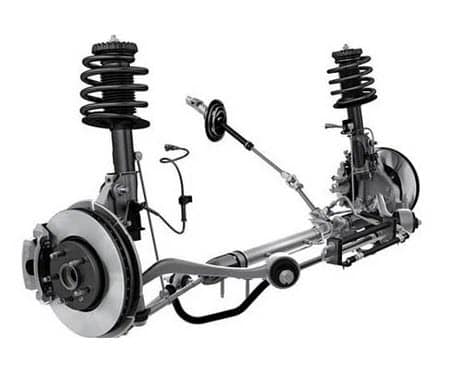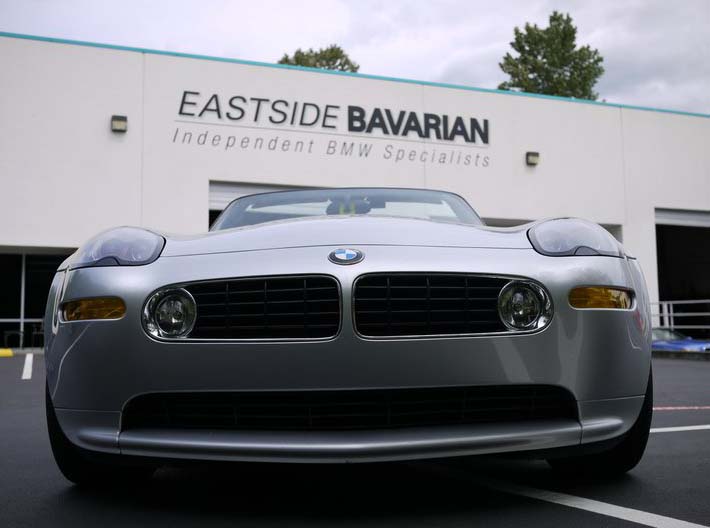HOW DOES MY VEHICLE’S SUSPENSION WORK?
The three fundamental components of a vehicle’s suspension are the springs, dampers, and anti-sway bars. Within these components, there are numerous parts called struts, shocks, axles, and control arms. The sprung mass in a vehicle is the mass of the vehicle supported by springs, and the unsprung mass is the mass that is not supported by springs. The stiffness of the springs determines how the sprung mass responds to the car as you drive. Loosely sprung cars, like luxury cars from, can absorb bumps and produce a smooth ride, but those cars are more prone to body sway and are not great at cornering. Tightly sprung cars, like BMW M cars, are less forgiving on the road but can be driven more aggressively. Effectively aligned steering, as well as suspension, can provide a smooth and controlled cruising around Western Washington.
Springs alone are not enough to absorb the vertical acceleration produced by your car’s wheels. The spring will continue to bounce until it runs out of energy, causing a very bouncy ride. To prevent this, your vehicle has shock absorbers that slow the springs down through a process called dampening. Shock absorbers slow down and reduce the magnitude of vibratory motions by turning the kinetic energy of suspension movement into heat energy that can be dissipated through hydraulic fluid. Anti-sway bars are used with shock absorbers and springs to stabilize vehicles as they move. An anti-sway bar is a metal rod that joins each side of the suspension together.
HOW DO I KNOWSOMETHING IS WRONGWITH MY VEHICLE’S SUSPENSION?
Before you consider suspension repair services, you have to recognize whether you have an issue with your system. Here are five signs to watch out for that indicate your vehicle needs a steering and suspension service:
Car rides roughly.
If every bump in the road causes your car to bounce, there is a problem with your vehicle’s suspension.
Drifting or pulling during turns.
If your car is drifting, this means your suspension is not keeping your vehicle stable when you turn.
Dips or “nose dives” when stopping.
You may also notice that your vehicle is taking longer to reach a complete stop.
Uneven tire treads.
Damaged, “oily” shocks.
If you look under your vehicle and your shocks and/or struts look greasy or oily, they are probably leaking.



